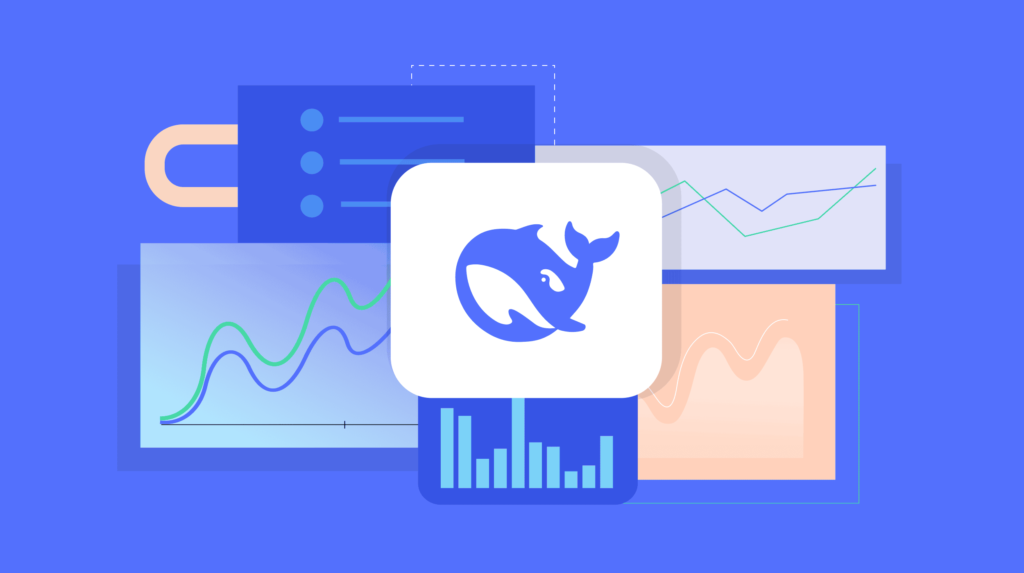How to Use DeepSeek AI and Write Effective Prompts: A Comprehensive Guide
In the rapidly evolving world of artificial intelligence, tools like DeepSeek AI are revolutionizing how individuals and businesses automate tasks, generate content, and solve complex problems. However, the key to unlocking the full potential of AI lies in understanding how to craft effective prompts. This guide will walk you through using DeepSeek AI, share actionable strategies for writing prompts, and answer common questions to help you maximize your results.
What is DeepSeek AI?

DeepSeek AI is an advanced artificial intelligence platform designed to assist users in generating text, analyzing data, automating workflows, and providing insights across industries. Whether you’re a content creator, developer, marketer, or researcher, DeepSeek AI offers tools to streamline tasks and enhance productivity. Its capabilities range from natural language processing (NLP) to predictive analytics, making it versatile for both creative and technical applications.
How to Use DeepSeek AI
Before diving into prompt writing, it’s essential to familiarize yourself with DeepSeek AI’s interface and functionalities. Here’s a step-by-step breakdown:
1. Access the Platform
- Visit DeepSeek AI’s official website and sign up for an account. Most platforms offer free trials or tiered subscriptions based on usage needs.
- Log in to your dashboard, where you’ll find tools like text generation, data analysis, and custom workflow builders.
2. Choose Your Task
DeepSeek AI typically categorizes tasks into modules such as:
- Content Generation: For writing articles, social media posts, or marketing copy.
- Data Analysis: To interpret datasets, create visualizations, or generate reports.
- Code Assistance: Helps developers debug or write code snippets.
- Research Support: Summarizes documents or extracts key insights from large texts.
Select the module that aligns with your goal.
3. Input Your Prompt
This is where prompt engineering comes into play. In the input box, type a clear, specific instruction or question (more on crafting prompts below).
4. Adjust Settings (Optional)
Some platforms allow you to customize outputs by adjusting:
- Tone: Formal, casual, technical, etc.
- Length: Short summaries vs. detailed explanations.
- Creativity Level: Controls how “original” or conservative the AI’s response is.
5. Generate and Review
Click “Generate” and wait a few seconds. Always review the output for accuracy, relevance, and coherence. If the result isn’t perfect, refine your prompt and try again.
Writing Effective Prompts for DeepSeek AI
The quality of your prompts directly impacts the AI’s performance. Follow these principles to craft prompts that yield precise, useful results:
1. Be Specific and Clear
Vague prompts lead to generic responses. Specify the format, context, and goal.
- Weak Prompt: “Write about climate change.”
- Strong Prompt: “Write a 500-word blog post explaining the impact of renewable energy on reducing carbon emissions, targeting small business owners.”
2. Provide Context
Help the AI understand your audience, industry, or unique requirements.
- Example: “Generate three LinkedIn post ideas for a SaaS company launching a project management tool. Focus on remote teams and productivity tips.”
3. Use Examples
Including a sample of the desired output can guide the AI’s style and structure.
- “Write a product description like this: [Insert example]. Now describe a wireless earbud with 24-hour battery life and noise cancellation.”
4. Break Down Complex Tasks
For multi-step requests, split them into smaller prompts.
- Instead of: “Plan a marketing campaign for a fitness app,” try:
- “Identify the top three target audiences for a fitness app offering personalized workouts.”
- “Create a week-long social media calendar for engaging millennials interested in home workouts.”
5. Iterate and Refine
Treat prompt writing as an iterative process. If the first result isn’t perfect, tweak your wording, add constraints, or ask follow-up questions.
Examples of Prompts for Different Use Cases

To inspire your workflow, here are practical examples across industries:
Content Creation
- “Draft a 10-tweet thread explaining ChatGPT’s benefits for content marketers. Use emojis and hashtags.”
- “Write a YouTube video script about time management hacks for entrepreneurs, with a friendly, motivational tone.”
Technical Queries
- “Explain quantum computing in simple terms for high school students. Use analogies related to everyday technology.”
- “Generate Python code to scrape a website’s homepage and extract all headings.”
Business Applications
- “Create a SWOT analysis for a vegan bakery expanding into gluten-free products.”
- “Suggest five customer retention strategies for an e-commerce store with a 30% repeat purchase rate.”
Creative Writing
- “Write a short horror story set in a deserted lighthouse during a storm. Include a plot twist in the final paragraph.”
Best Practices for Using DeepSeek AI
- Understand the AI’s Strengths and Limits: While DeepSeek excels at text generation and analysis, it may struggle with highly nuanced or subjective tasks.
- Use Keywords Strategically: Incorporate SEO keywords naturally into prompts for content-related tasks (e.g., “Include keywords ‘sustainable fashion’ and ‘ethical clothing’”).
- Test Different Phrasings: Experiment with synonyms or question formats (e.g., “How does X work?” vs. “Explain X”).
- Ethical Considerations: Avoid generating misleading information, copyrighted content, or biased outputs.
Common Mistakes to Avoid
- Overloading Prompts: Asking for too much at once can confuse the AI.
- Neglecting Context: Failing to specify the audience or industry leads to generic results.
- Skipping Reviews: Always fact-check AI-generated content, especially for technical or medical topics.
FAQ: DeepSeek AI and Prompt Writing
Q1: Is DeepSeek AI free to use?
Most AI platforms offer free tiers with limited features, while advanced capabilities require a subscription. Check DeepSeek’s pricing page for details.
Q2: How is DeepSeek AI different from ChatGPT?
DeepSeek may specialize in certain areas like data analysis or industry-specific tasks, whereas ChatGPT is a general-purpose conversational AI.
Q3: Can I use DeepSeek AI for academic research?
Yes, but always verify sources and ensure outputs comply with academic integrity guidelines.
Q4: What if the AI generates inaccurate information?
Refine your prompt with more context or constraints. Cross-check critical facts with reliable sources.
Q5: How do I customize outputs for my brand’s voice?
Include examples of your brand’s existing content in prompts to train the AI on your style.
Q6: Is my data safe with DeepSeek AI?
Reputable platforms use encryption and clear privacy policies. Review their terms of service to confirm how data is handled.
Q7: Can DeepSeek AI write code?
Yes, most AI tools assist with coding tasks, but test snippets thoroughly before deployment.
Q8: How can I improve my prompt-writing skills?
Practice regularly, study effective prompts from communities, and analyze how small wording changes affect results.
Final Thoughts
Mastering DeepSeek AI starts with thoughtful prompt engineering. By combining specificity, context, and iteration, you’ll unlock precise, high-quality outputs tailored to your needs. As AI continues to evolve, staying adaptable and ethical will ensure you harness its power responsibly. Start experimenting with the strategies above, and watch your productivity soar!
Read More: Best Meal Prep Strategies for Fast Weight Loss Success
Finance and Business blog: News9 india
